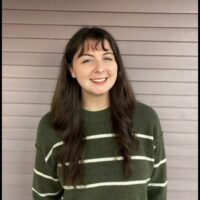Marketing for manufacturing companies is different. Visitors are unique, well-informed and deals are typically large and long-term. For all of these reasons and more, it’s crucial to have a quality website.
Your site’s primary job is to emulate a sales conversation. In other words, your website should provide your site visitors with all the information they need to make an informed decision about your product or service and move the conversation forward with your company.
A quality site should:
- Showcase what you do and who you are
- Answer common questions
- Address potential objections
- Support assertions with evidence
- Provide a clear path for customers to convert- whether that means contacting you, placing an order, or otherwise moving through the conversion funnel.
Here’s a high-level overview of the strategy, design and development needs of a high-quality website:
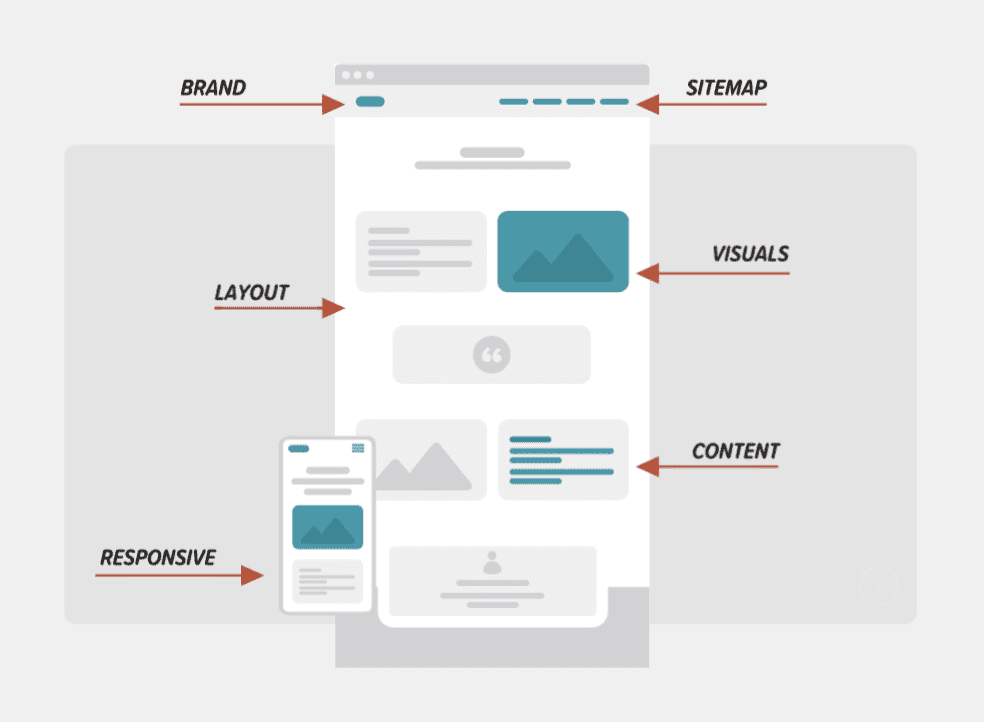
Website needs for manufacturing companies
When creating a quality website, it’s essential to keep in mind the unique needs and concerns of your industry. For manufacturing website design, these may include:
- Compliance risks: No matter what industry you’re in, there are laws and regulations you must follow. Your site should be in line with these regulations and clearly display relevant certifications or accreditations.
- Security risks: You work with a high volume of clients, many of whom may require additional security. It’s important for your website to be protected against malicious activity and bots.
- Conversion rates: Your website should encourage conversions. Whether you’re hoping for users to purchase products or fill out a form, a site that is optimized for conversions is key to supporting your business goals.
- Integration: In the manufacturing world, inventory management, CRM and other internal systems are a vital part of your day-to-day operations and business management. Your website needs to seamlessly integrate with these systems.
- Scalability and support: Your website must be an up-to-date reflection of your business goals and offerings. You need a scalable site with a long-term support partner.
- Lead generation: Not only should your website be a place for existing customers to contact you or find answers to their questions, it should also be a resource for attracting new leads.
- Standing out: What makes your company different from others? Your website should set you apart from the competition, highlighting your unique offerings and why you’re different from other manufacturing companies.
- Cost-effectiveness: How much is it currently costing you to update and maintain your website? Does the current ROI make sense? Your website should be a worthwhile investment, bringing in traffic, customers and new leads.
Read through these 10 web design must-haves for a high-performing website.
Orbit is focused on building and designing high-quality websites that are suited to your industry and specific company needs. Whether you’re looking for optimization help or a full site redesign, our team will serve as subject matter experts, building a website that addresses all of your unique needs and pain points.
Orbit also offers managed web hosting services, keeping your site secure and up-to-date. See how we’ve crafted functional, beautiful websites for manufacturing companies.
8 common elements of top manufacturing company websites
Orbit’s has worked closely with companies in every industry and recently set out to analyze what elements contribute to a high-performing manufacturing website.
We compiled a list of 100 top manufacturing websites and recorded some common web design features we observed on their sites. Here’s what we found.
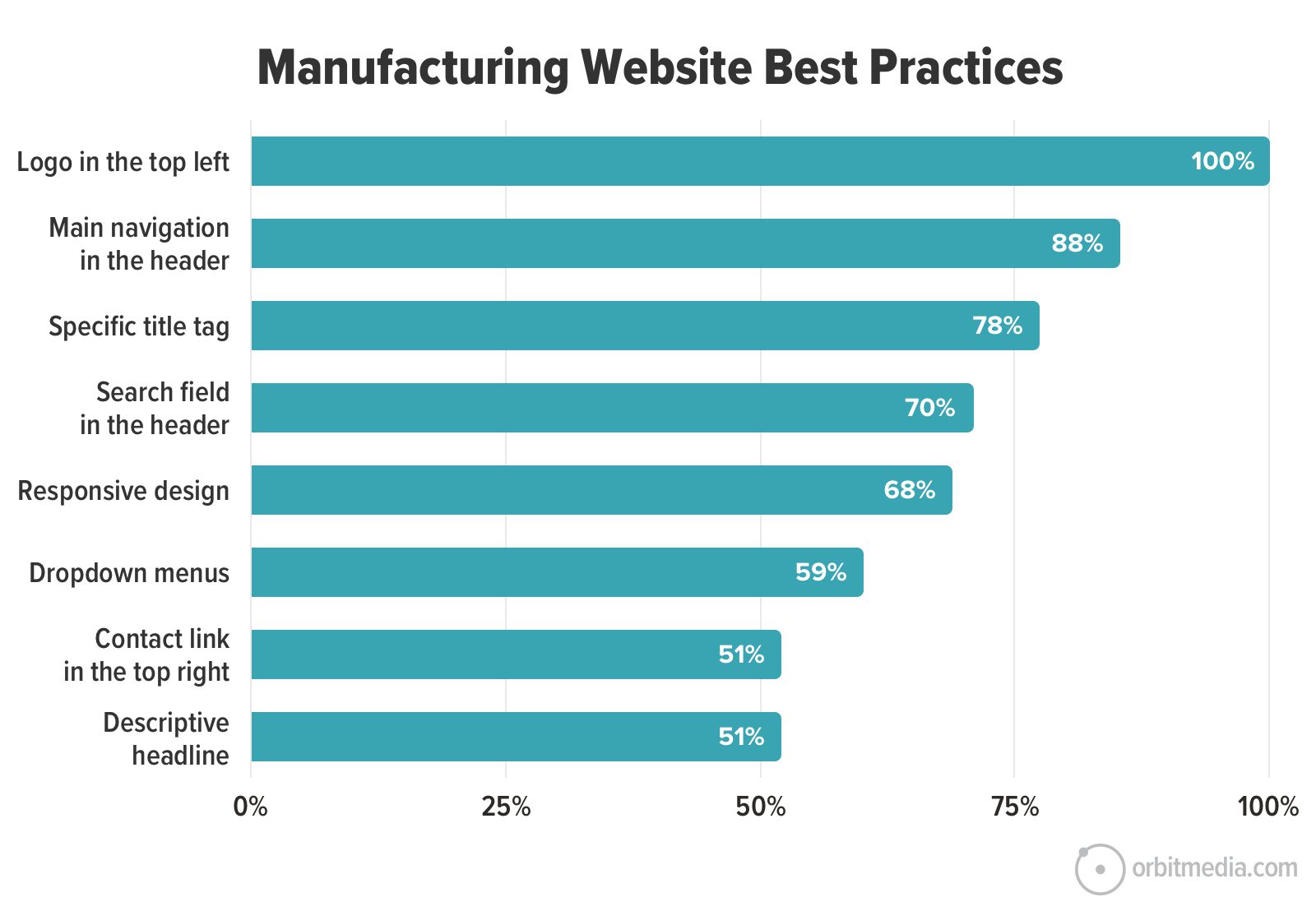
1. Logo in the top left
100% of the best manufacturing websites have a logo in the top left of their page. This isn’t much of a surprise, given that 93% of all websites do the same, but it is considered an important website design standard.
Logo placement may not seem like a huge deal, but certain design elements can greatly improve user experience. For example, users expect the company logo to be in the top left, and one study found that typicality correlates with perceived beauty. So in theory, including your logo where users are expecting it to be = a more beautiful site.
2. Main navigation is in the header
88% of top manufacturing companies include their main navigation in the header.
A site’s main navigation is the best way for users to find important information about a company. We know that nearly ¾ of homepage visitors don’t scroll meaning they don’t see any of the content you’re putting further down on your page. If you aren’t including your navigation in a very obvious place, users may quickly lose interest or become confused and leave your site.
3. Specific title tag
78% of top manufacturing companies have a specific title tag on their website.
A title tag is a simple but incredibly important on-page search engine optimization (SEO) factor. Your title tag tells search engines and users exactly what your page is about, indicating that your page is relevant for a specific keyword or keyphrase.
If your title tag is simply “Home,” it isn’t indicating relevance for anything. Similar to your headline, the title tag should be descriptive and unique for your homepage. This is your chance to rank highly for your specific industry, product, or service.
 |
Andy Crestodina, Cofounder/CMO, Orbit Media“This is the most important piece of SEO real estate on the page that’s most likely to rank in search.“ |
Here are some examples of specific title tags:
- Retaining Rings, Wave Springs and Hose Clamp Manufacturer | Company Name
- Leading Industrial Oven Manufacturing Company | Company Name
- Foodservice Equipment Manufacturers | Company Name
4. Search field in the header
70% of top manufacturing companies include a search field in their header.
A website usability study found that the most common cause of user failure and frustration is low findability. An accessible search function can help users locate what they are looking for more quickly, improving user experience and the chances of a conversion. This can be especially useful for manufacturers who have dozens of pages focused on their services or product information.
5. Responsive web design
68% of top manufacturing companies have websites that are responsive on mobile devices.
Recent data shows that mobile devices generate over half of web traffic worldwide. Ensuring that your website includes responsive web design on mobile, desktop and tablets is extremely important for user experience, accessibility, maintenance and scalability.
6. Dropdown menus
59% of top manufacturing companies include dropdown menus on their website.
A dropdown menu is a great option for websites with a lot of pages or subsections (like many manufacturing websites). They save clicks, streamline navigation, improve user experience and give you a better idea of what your users are trying to find.
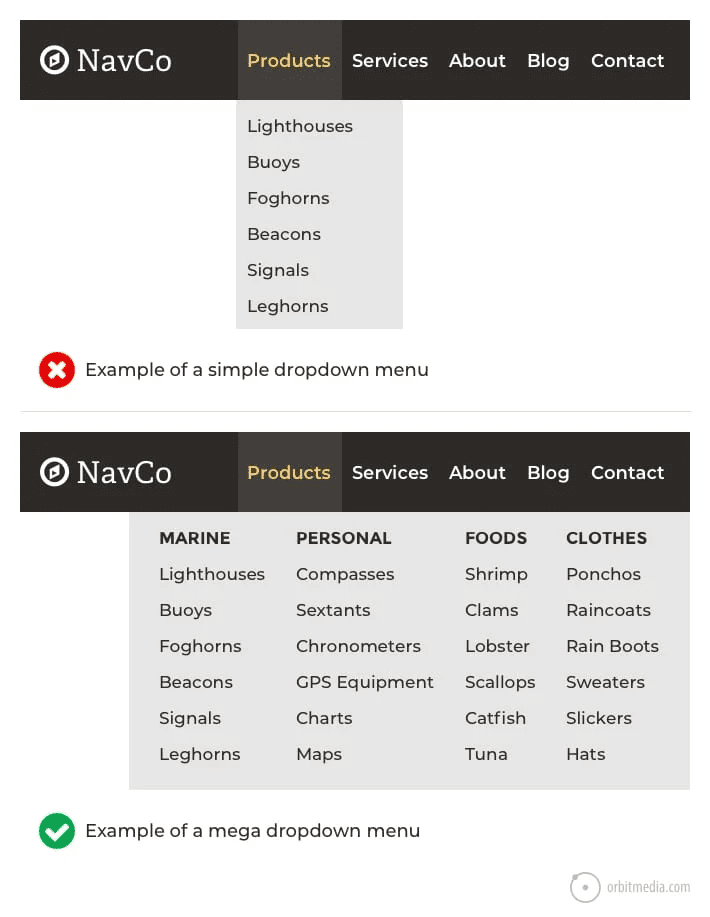
7. Contact link in the top right
51% of top manufacturing companies include a contact link in the top right of their website.
Just as we discussed the importance of logo placement earlier, a contact link in the top right is considered typical. Users expect to find this option near the top right corner, and when websites obey, they gain brownie points. Making it easy to contact your company may also improve your chances of generating leads.
8. Descriptive headline
51% of top manufacturing companies have a descriptive headline on their site.
The headline is often the first thing a user will see when they land on your website. It’s also your first opportunity to tell users what you actually do. A good headline is explicit, descriptive and specific to your company. Here are some examples of good vs bad headlines:
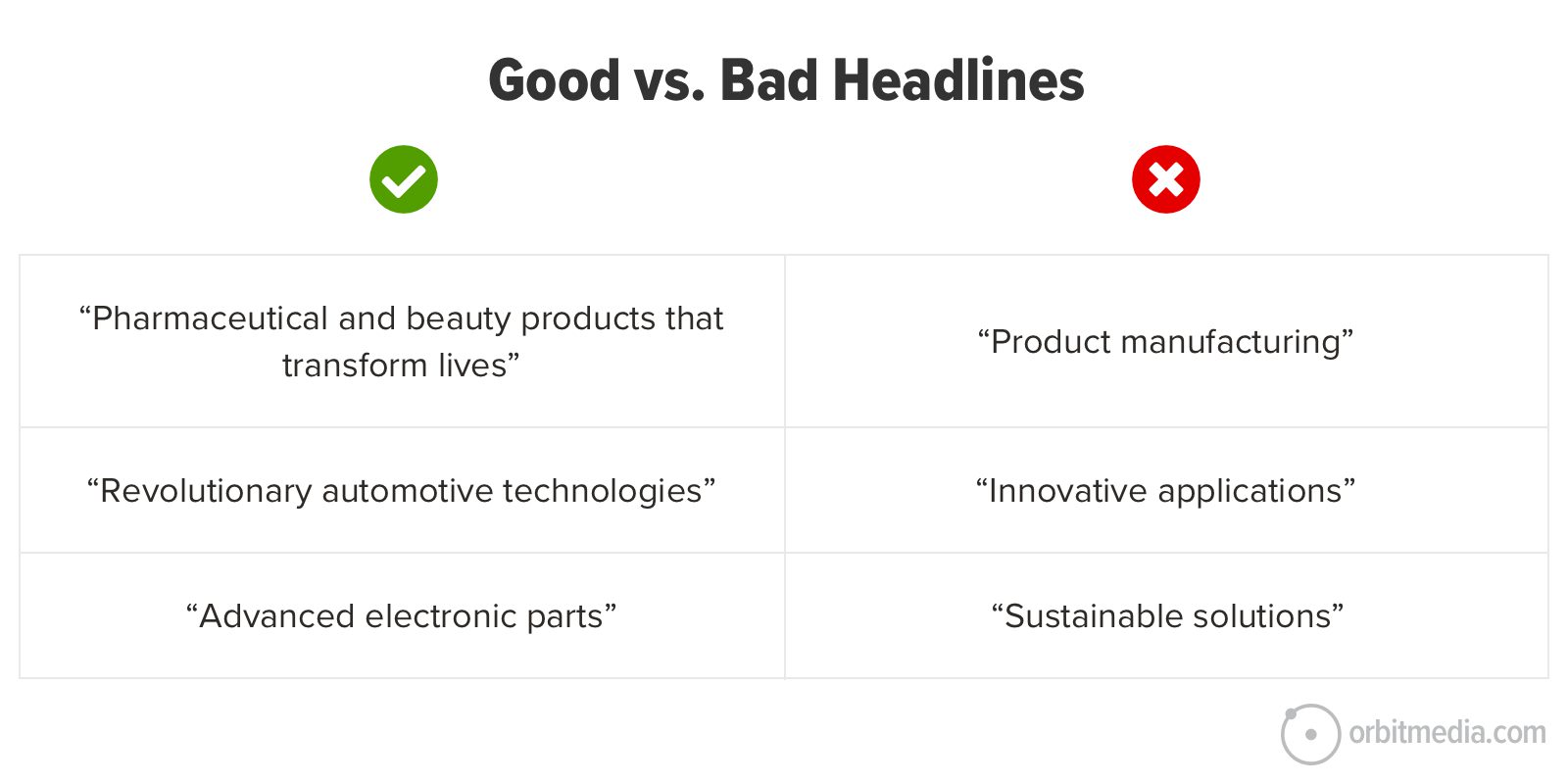
If your manufacturing business wears many hats, it may be difficult to fit everything you do in a concise headline. Another great option is to include a short blurb below your headline and descriptive navigation levels so website visitors can grasp exactly what you’re offering. More on that later.
What many top manufacturing company websites are missing
Now that we’ve covered some basic elements that many companies are getting right, we should go over a few things that they’re missing. No website is going to be perfect, but certain factors can have a huge impact on usability and SEO.
1. Descriptive navigation labels
Only 17% of top manufacturing companies include descriptive navigation labels.
Many companies include their main navigation in the header, but a small percentage are actually using descriptive labels. Adding specificity to the navigation can improve SEO and user experience.
Instead of labels like “Products” or “What we do”, try adding in clarity with labels like “Automotive Services” or “Commercial Door Openers.”
Here are nine website navigation best practices (and a few warnings).
2. Specific calls to action (CTAs)
Only 11% of top manufacturing companies include specific CTAs on their site.
A persuasive call to action gives you the chance to guide users towards the next step in the conversion funnel. But there is more to a persuasive CTA than simply asking your user to “purchase now” or to “read more.” Bumping up your CTA game can lead to more users actually taking action.
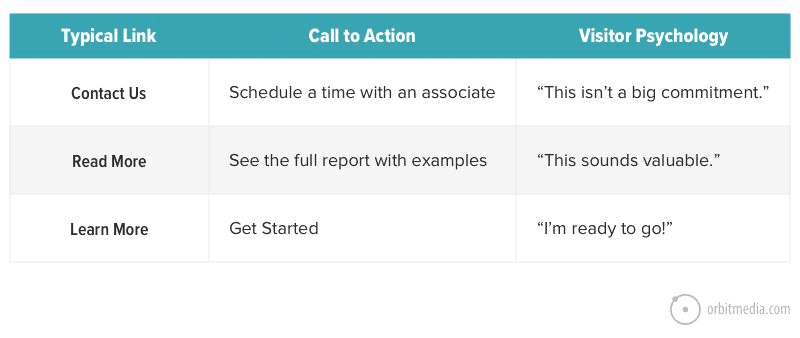
3. Pictures of people
Less than 5% of top manufacturing companies have pictures of people (excluding stock imagery) on their site.
Users want to see real people, regardless of what you’re selling. Including images of real people (not stock photos) makes your site seem more approachable, keeps users more engaged and has been shown to greatly improve conversions. These images can be of your team, clients, testimonial headshots, experts in the field, etc.

4. Corporate video
Only 23% of top manufacturing websites include a corporate video.
Videos have some of the highest visual prominence, meaning they are the most likely to grab a user’s attention. Similar to having pictures of people on your site, including videos is a great way to seem more approachable and to keep users engaged. A good corporate video is specific to your company, explaining who you are and what you do.
5. Evidence
Less than 20% of top manufacturing companies include evidence and social proof on their websites.
A potential customer looking for a manufacturer finds your website through search results, reads your descriptive headline that is relevant to what they are searching for, and is now looking for proof that you can get the job done. Instead of saying “just trust us”, you have the opportunity to provide social proof and evidence directly on your homepage or service page (or ideally, both!).
Evidence can be real data from clients, testimonials, case studies, client logos, or awards. Providing plenty of social proof can have a huge influence on users, encouraging them to move forward with your company.
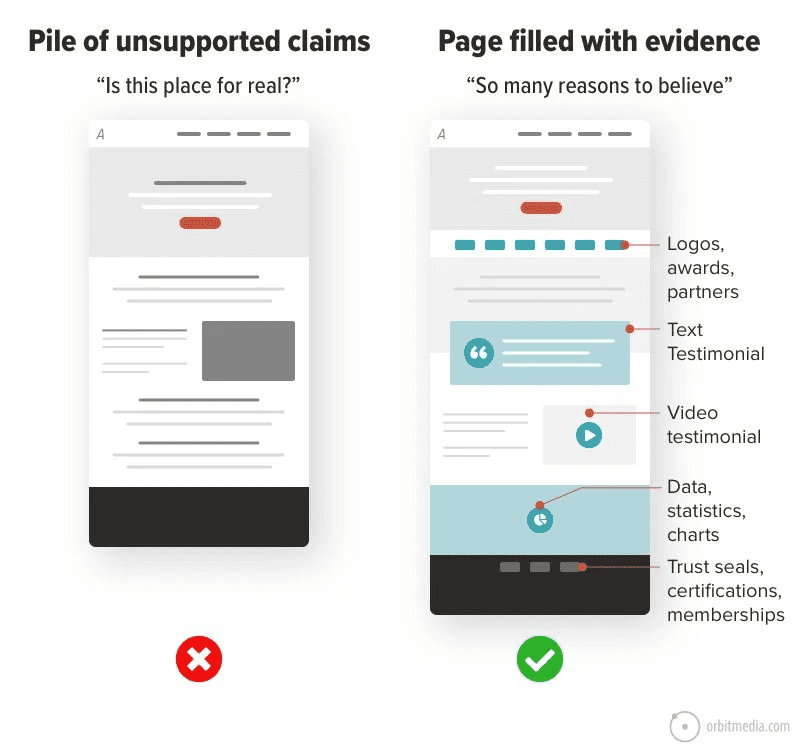
6. Email sign-up in the footer
Only 24% of top manufacturing company websites have an email sign-up option in the footer
An email sign-up at the bottom of your page is an easy way to prompt users to connect with you before they scroll back up or exit the page. Depending on your marketing strategies and company, this could be a newsletter sign-up, or a simple contact form so you can easily get in touch with your leads. Best practices for an email signup are to include:
- Prominence: Designing your form to stand out.
- Promise: Let them know what you’ll be sending (topic) and when you’ll be sending it (frequency).
- Proof: A tiny testimonial, or the number of subscribers.
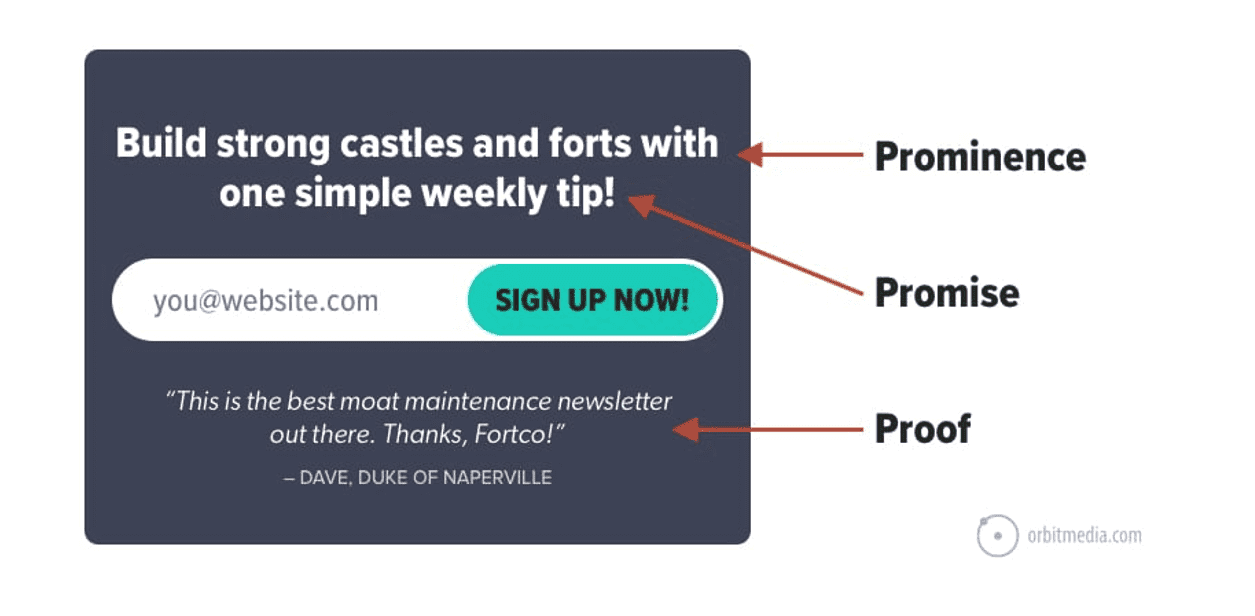
7. Blog content on the homepage
Less than 50% of top manufacturing websites include blog content on their homepage.
Your homepage gives you the chance to educate your users, answer questions, convince them to choose your company and address any concerns they may have. You can support these goals by adding valuable content to your page in the form of news articles, blog posts, recent social media posts, etc.
Here’s an example of a news feed on a homepage:

Creating the best website design for manufacturing companies
You should have a clear understanding of why a quality website is an important part of digital marketing. When you include the right information on your site, you’re equipping users with the knowledge they need to move forward with your company. A website is a virtual storefront, and whether you’re selling clothes or manufacturing pens, it’s important to make a good first impression.
We’ve seen many top manufacturing companies optimizing for search and user experience. However, many companies are failing to include key features such as social proof, specific CTAs, photos, videos and descriptive navigation labels. By implementing these elements on your website, you can stand out against the competition.
Your website can be a major revenue engine for your company, driving inbound leads and supporting partner relationships. But redesigning a website to be accessible, secure, user-friendly and search-optimized isn’t a simple task. With Orbit, you receive long-term support from experts in web design and web development.
